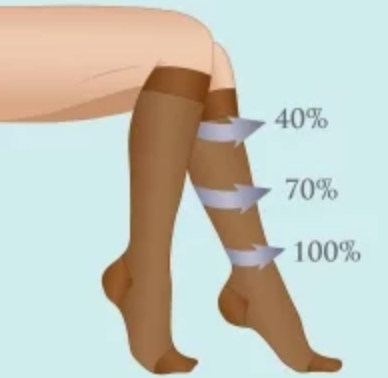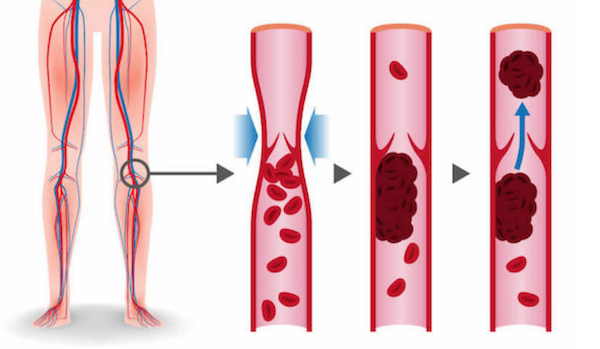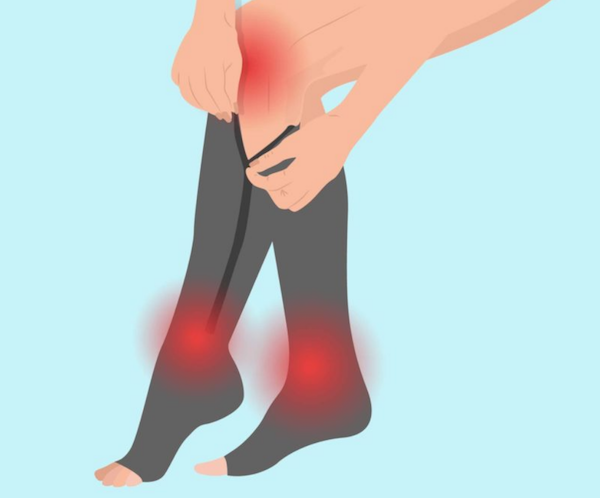Compression socks are socks that are specially designed to aid blood circulation in the legs by putting gentle pressure on them. But can wearing them be harmful to one’s health? Continue reading to find out!
Can Wearing Compression Socks be Harmful? We’ll answer that question and more. But first, why do people wear compression socks?
What are its benefits?


One of the biggest benefits one can receive from wearing compression socks is improved blood circulation in the lower legs.
They are made to fit legs firmly, but gently, to exert graduated compression pressure that helps blood circulation.
Graduated compression pressure means that most pressure is applied on the feet and around the ankles, then lesser pressure as it moves up the calves, and the least pressure around the knees or thighs (depending on the length of the socks). This distribution of graduated pressure assists blood flow towards one’s heart efficiently.
This is important for the legs as this is where health issues such as varicose veins and deep vein thrombosis (DVT) may occur.
What health issues can they treat or prevent?

- Venous reflux disease (chronic venous insufficiency),
- Varicose veins,
- Spider veins,
- Deep vein thrombosis (DVT),
- Venous ulcers,
- Peripheral edema,
- Lymphedema,
- Phlebitis, and
- Lipodermatosclerosis.
What potential harm can they bring?

- Discomfort
The use of these stockings is not one-size-fits-all; they come in various levels of pressure and different sizes for people with particular needs.
Discomfort during the first few days of wearing compression socks is normal as the pressure applied on one’s legs and feet may initially be unfamiliar to the body.
If discomfort persists for a couple days or turns into severe pain, discontinue use immediately.
- Skin irritation
This is mostly due to an allergic reaction to the material of the compression socks. It is necessary to read the product description, especially the material used in manufacturing them, before purchase to avoid potential allergic reactions. The skin may also become irritated if one has been wearing the same pair of compression socks repeatedly without wash or for a prolonged period of time.

- Corns and Calluses
These are fairly common in people who have started wearing compression stockings/hosiery; these are hardened layers of skin when the skin tries to protect itself against pressure and friction. This occurs due to the compression socks being too tight.
- Paresthesia
This is commonly known as ‘pins and needles’ is a sensation of prickling, tingling, and numbness of the skin. Feeling this in the feet after putting on compression socks indicates that they are too tight.
What is the conclusion?
Compression socks can bring harm if one wears the incorrect pressure level and/or sock size.
It is recommended to consult with a doctor to determine the appropriate size and type of compression sock in accordance to one’s health.
The Do’s and Do Not’s for compression socks

- Do get a professional to measure one’s legs and feet before buying a pair.
- Do seek medical advice to ensure the compression level is appropriate for one’s health conditions. Generally, for daily activities, a mild pressure level of 8-15 mmHg or 15-20 mmHg is suitable.
- Do put them on first thing in the morning. The conditions and situations that compression stockings help with often happen during the day, as the legs are least swollen in the morning as well.
- Do replace them every 3 to 6 months. Compression socks feature a lot of elastic fibers. With time, these fibers will break down or weaken. When they begin to sag or lose their elasticity, then it is time to replace them.
- Do wash and dry properly and routinely. Compression socks often come with care labels and instructions on how to properly wash and dry them. Those that are washable in a washing machine should be placed in a mesh bag to protect against damage.

- Do not roll them up to put them on or take them off. Rolling up the compression socks make a very tight band that cuts off circulation to the legs.
- Do not alter them. Avoid cutting off any part of the socks as that could make them roll up and cut circulation to the legs.
- Do not wear them overnight. Unless recommended by a physician or doctor.

